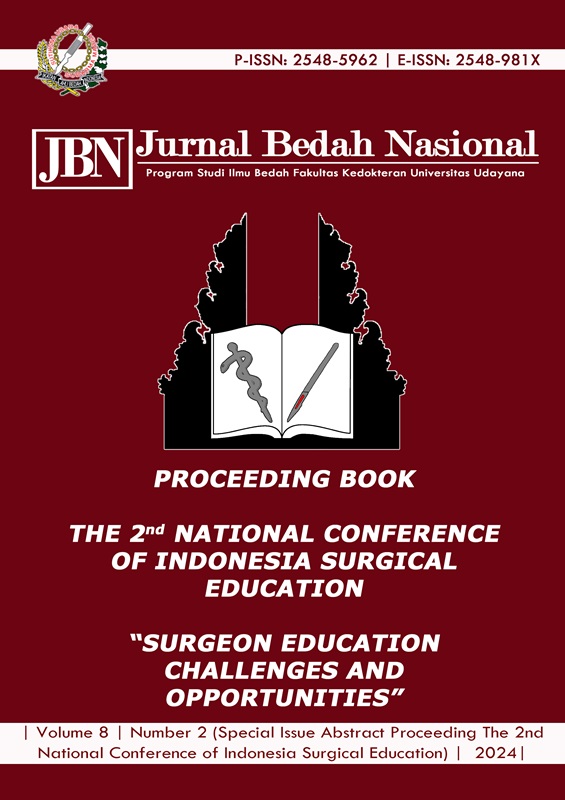053. Amyand’s Hernia Manifesting as Recurrent Incarcerated Lateral Inguinal Hernia: A Case Report
Abstract
Background: Amyand’s hernia (AH) is a rare type of inguinal hernia, constituting approximately 1% of all inguinal hernia cases, where the appendix is found within the hernia sac. Typically, patients with AH are asymptomatic and the condition is often diagnosed during surgery. Due to its rarity and nonspecific presentation, diagnosis requires a high index of suspicion and relies heavily on imaging. Surgical intervention is the primary treatment. Here, we present a case of Amyand’s hernia managed surgically at our medium-complexity public hospital. Case: A 39-year-old man presented to the emergency room with an incarcerated right side inguinal hernia without any signs of ischemic complications. He was admitted, and an hernioplasty was performed, as an incidental finding we encountered an Amyand hernia treated without appendectomy and placement of a prosthetic mesh without any complications. During open hernia repair surgery, dense adhesions were found within the hernia sac. Upon releasing the adhesions, the appendix was discovered herniated into the inguinal canal, mildly congested but not inflamed. Consequently, a preperitoneal polypropylene mesh hernioplasty using the Lichtenstein tension-free repair technique was performed along with an appendectomy. The postoperative period was uneventful, and the patient was discharged on the second day. Conclusion: Amyand’s hernia is extremely rare, involving the appendix in the hernia sac, and accounts for 0.4–1% of all inguinal hernia cases. Literature indicates that the incidence of AH is very low, with only 0.1% of cases leading to acute appendicitis due to late presentation and missed diagnosis. Amyand’s hernia represents a small fraction of inguinal hernia cases and is usually diagnosed incidentally during surgery. This condition may remain asymptomatic, presenting similarly to a typical inguinal hernia. Management should be tailored based on the stage of appendiceal inflammation, presence of abdominal sepsis, and patient comorbidities. This individualized approach enables surgeons to effectively handle various presentations of Amyand’s hernia. Laparoscopy can serve both diagnostic and therapeutic roles in managing AH.
Downloads

This work is licensed under a Creative Commons Attribution 4.0 International License.
Program Studi Ilmu Bedah Fakultas Kedokteran Universitas Udayana. 
This work is licensed under a Creative Commons Attribution 4.0 International License.






